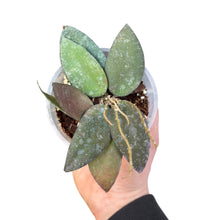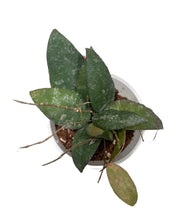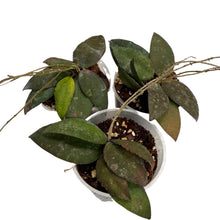9cm potted plant in a coco husk plug with coco coir, coco chips, perlite and pine bark. We do not recommend removing the plant from the coco husk plug.
The picture shown is an example of what's in stock. You will receive a plant as close to the picture and description as possible :)
Hoya caudata is part of the Apocynaceae family and its native range is S. Thailand to W. Malesia, it is an epiphytic climber with thin wiry stems and adventitious roots to anchor itself to rocks and trees. Leaves are pendulous and thick and they are borne opposite to each other although usually only one leaf per node. Leaf blades are ovate and green with silver mottling and corrugated margins; if exposed to full sun, leaves become red. Juvenile leaves are thinner and hairy, becoming more rigid and glabrous as they mature.
Each umbel produces between 8–15 flowers, corolla is white and pubescent, corona is red.
Genus name is new Latin, named after Thomas Hoy ( c. 1750– c. 1821), English gardener. Specific epithet is from Modern Latin ‘caudatus’ meaning ‘having a tail’, this is in reference to the long pointed anther appendages that protrude from the centre of the corona.
Light: Bright indirect light, meaning the plant sees the sun for 0-4 hours per day - this could be through trees or a translucent curtain, it’s important for the plant to see the sky in order to thrive.
Water: Given adequate light, keep the potting mix evenly moist, the potting mix is traditionally quite chunky, water will usually flow through quite easily. Pour water slowly over the top of the substrate and allow the water to pass through the drainage holes.
Potting mix: A chunky well-draining mix composed of coco coir, perlite or vermiculite, orchid bark, worm castings and some horticultural charcoal.
Fertilising: Feed your plant every few waterings during the growing season or when you observe active growth. You can dilute fertiliser to half the recommended amount but never add more.
Temperature: 15-35˚C.
Humidity: Hoya would prefer higher humidity, between 60-80% but do well to adapt to average home humidity. You can increase humidity by placing the plant on a watered pebble tray or using a humidifier.
For further information about Hoya, check out our blog.
Hoya aren’t considered toxic, however, they may make your pet or child vomit if ingested, keep out of reach just to be safe.







